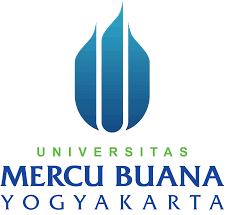The Effect of Additional Lemongrass Extract (Cymbopogon nardus L.) on the Characteristics of Edible Film Sodium Alginate and Arabic Gum
DOI:
https://doi.org/10.55927/fjst.v2i8.5722Keywords:
Edible Film, Lemongrass Extract, Antibacterial ActivityAbstract
This research is a quantitative study that uses quasi-experimental research methods that aim to analyze the effect of adding lemongrass extract (Cymbopogon Nardus L.) to the characteristics of the edible film, and to analyze the antimicrobial activity of the edible film. This study used a completely randomized design (CRD) with the addition of lemongrass extract, namely control, 1%, 1.5%, 2.5%. And it was repeated 3 times so that 12 treatment units were obtained. The data obtained were calculated using Analysis of variance (ANOVA) and if there was a difference, continued with Duncan's test using SPSS 16. The results showed that the addition of 2.5% lemongrass extract affected the characteristics of the edible film form of thickness, water resistance, elongation, and has the ability to inhibit pathogenic bacteria with a concentration of 2.5%. However, there was no significant difference in the tensile strength with a concentration of 2.5%.
Downloads
References
Ali, A., Maqbool, M., Alderson, P. G., & Zahid, N. (2013). Effect of Gum Arabic as an Edible Coating on Antioxidant Capacity of Tomato (Solanum lycopersicum L.) Fruit During Storage. Postharvest Biology and Technology, 76(February), 119–124. https://doi.org/10.1016/j.postharvbio.2012.09.011
Ban, W., Song, J., Argyropoulos, D. S., & Lucia, L. A. (2006). Improving the Physical and Chemical Functionally of Starch – Derived Films with Biopolymers. Journal of Applied Polymer Science, 100(3), 2542–2548. https://doi.org/10.1002/app.23698
Chang, S. H., & Jung, K. T. (2010). Edible Film. 1(19), 1–5. https://patentimages.storage.googleapis.com/3b/c9/82/
c283c7b24afe69/US20100019677A1.pdf
Fehragucci, H. (2012). Pengaruh Penambahan Plasticizer dan Kitosan Terhadap Karakter Edible Film Ca-Alginat. In Universitas Sebelas Maret (Issue Cmc). Universitas Sebelas Maret.
Gómez-Estaca, J., López De Lacey, A., Gómez-Guillén, M. C., López-Caballero, M. E., & Montero, P. (2009). Antimicrobial Activity of Composite Edible Films Based on Fish Gelatin and Chitosan Incorporated with Clove Essential Oil. Journal of Aquatic Food Product Technology, 18(1–2), 46–52. https://doi.org/10.1080/10498850802581252
Indahsya, Y., & Sanjaya, I. G. M. (2021). Pengaruh Penambahan Cellulose Nanocrystal (CNC) Dari Kulit Durian Durio Zibethinus Murr Terhadap Karekteristik Bionanocomposite Edible Film Berbasis Gelatin. In: Prosiding Seminar Nasional Kimia & Pendidikan Kimia#2 - 2021, 1(December), 47–27.
Maizura, M., Fazilah, A., Norziah, M. H., & Karim, A. A. (2007). Antibacterial activity and mechanical properties of partially hydrolyzed sago starch-alginate edible film containing lemongrass oil. Journal of Food Science, 72(6), 1–10. https://doi.org/10.1111/j.1750-3841.2007.00427.x
Mustapha, A. (2018). Comparative Analysis on the Extraction of Essential Oil from Lemongrass and Basil Leaves. International Journal of Innovative Science, Engineering & Technology, 5(11), 114–118.
Pavlath, A. E., & Orts, W. J. (2009). Edible Films and Coatings for Food Applications. In M. E. Embuscado & K. C. Huber (Eds.), Edible Films and Coatings for Food Applications (Issue December 2015). Springer Dordrecht Heidelberg. https://doi.org/10.1007/978-0-387-92824-1
Quintavalla, S., & Vicini, L. (2002). Antimicrobial Food Packaging in Meat Industry. Meat Science, 62(3), 373–380. https://doi.org/10.1016/S0309-1740(02)00121-3
Setiani, W., Sudiarti, T., & Rahmidar, L. (2013). Preparasi Dan Karakterisasi Edible Film Dari Poliblend Pati Sukun-Kitosan. Valensi, 3(2), 100–109.
Setyaningrum, A., Sumarni, N. K., & Hardi, J. (2017). Sifat Fisiko-Kimia Edible Film Agar – Agar Rumput Laut (Gracilaria sp.) Tersubtitusi Glyserol. Natural Science: Journal of Science and Technology, 6(2), 136–143. https://doi.org/10.22487/25411969.2017.v6.i2.8661
Wulandari, Y. A., Atun, S., & Rakhmawati, A. (2018). Uji Aktivitas Antibakteri Ekstrak Etanol Temu Kunci (Boesenbergia pandurata) terhadap Escherichia coli ATCC 11229 dan Staphylococcus epidermidis FNCC 0048 Secara Invitro. Jurnal Prodi Biologi, 7(7), 466.
Zuwanna, I., Fitriani, & Meilina, H. (2017). Pengemas Makanan Ramah Lingkungan Berbasis Limbah Cair Tahu ( Whey ) sebagai Edible Film. Prosiding Seminar Nasional Pascasarjana (SNP) Unsyiah, 1(1), 77–87.
Downloads
Published
How to Cite
Issue
Section
License
Copyright (c) 2023 Jein Lisdayanti Liah, Lahming, Reski Febyanti Rauf

This work is licensed under a Creative Commons Attribution 4.0 International License.

































